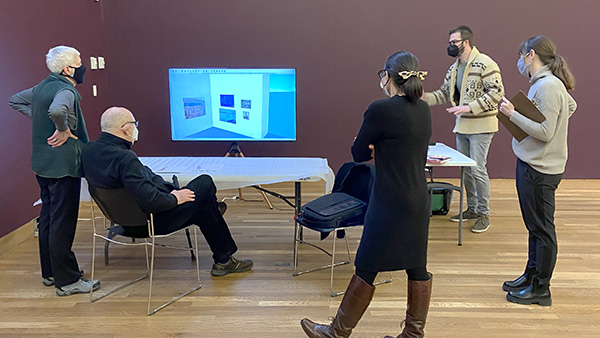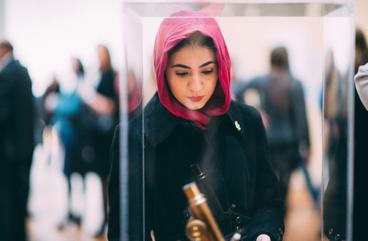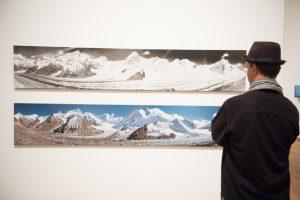Have you ever imagined what it would be like to be able to touch the art at a museum? Conservators and preparators get to do just this as they delicately move, care for, and arrange the pieces in the museum’s collection. The WAM Collective spoke to Reggie Spanier, Preparator at WAM, about what it’s like to work with curators to design and build exhibitions. Designing an exhibition involves a lot of voices and hands coming together to make tough choices about where and how things should be displayed. Here are some areas that are considered when crafting an exhibition plan:
How's it hanging? 🖼
The height at which art is hung is important to ensure that visitors of all heights can see the piece well. The height of a work is often determined by its size, how it is viewed best, and where it can fit on the walls! “58” on center” is how most works are hung at WAM meaning, the work’s center is 58 inches from the floor. Displays and sculptures must also be accessible and viewable from varying heights and in places that will not interfere with the flow of the space. Making sure folks of all ages can comfortably view the art is essential!
It's lit 💡
Do you know what a footcandle is? No? Yeah, neither did we! A footcandle is a unit of measurement of light, equal to about 10.76 lumens. Art, especially art on loan from other institutions, has legal contracts that specify how the work should be displayed. One of these specifications is how much light can shine on the piece. Works on paper are especially photosensitive and need to be preserved carefully. This is why many museums do not have windows in their galleries and shuffle works in and out of storage because light damages over time.
FUN FACT: WAM’s architect Frank Gehry wanted to include natural light through skylights in our building. These skylights were designed specifically so that the light from the sun would never directly hit the art, but would bounce off of a different surface first. The Carlson Gallery is an exception as it doesn’t feature any lights and is designed to house works on paper.
Art Storage 📦
Museums have a lot of art. All of that art can’t be displayed at one time, so they store it! Unlike your garage or attic, works must be preserved even when not on view. During building repairs over the summer, the WAM team had to move thousands of works out of storage so that construction in those areas could take place. This endeavor took many hours of labor and creative problem solving along the way. Now that repairs have been completed, the WAM team is in the process of moving works of art stored in the closed galleries back into storage so that galleries can be reopened. Art storage may not be visible to the visitors, but it is an important part of caring for the art and for rotating things around so that every time you come in, a new piece is there to greet you.
Special thanks to Reggie Spanier for his time with the WAM Collective and to the team who worked so hard during our renovations to keep the art safe!
Interview by the 2021-2022 WAM Collective



